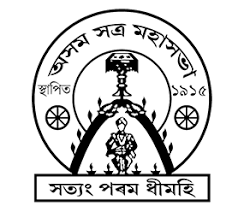Titled ‘Samannay Yatra’, the first phase of the programme was completed recently

In concern with the matter of many people in Majuli and a few villages along the Assam-Meghalaya border converting to Christianity, the Asom Sattra Mahasabha launched a massive awareness campaign and motivational programme called ‘Samannay Yatra’ (The Unity March) among the residents of the village, reported The Sentinel.
Talking to The Sentinel, Asom Sattra Mahasabha general secretary Kusum Kumar Mahanta said, “We’ve noticed with concern that some indigenous people have been getting converted to Christianity. This is happening among the Mising community in Majuli — one of the epicenters of neo-Vaishnavite culture — as well as among the Rabha people in several villages along the Assam-Meghalaya boundary.
“To stem the tide, we visited the residents of 20 villages in Majuli from October 19 to 22. During the course of ‘Samannay Yatra’, we urged them to preserve our religion and culture; and not go after a foreign religion.”
Declaring that they would carry out more such motivational campaigns in Majuli towards the latter part of the year, he said, “We got a positive response from almost all of them except a few in Jengrai, who told us that some xattras look down upon them as a community.
“We tried to make them understand that such alleged attitude has been noticeable among the xattras that fall within the ‘Udashin’ fold.“Their followers follow the ‘Brahmacharya’rule and remain bachelors for life. We also informed the villagers that members of the ‘Udashin’ fold treat many other communities that way, and not necessarily only the Mising community.”
With reference to conversions allegedly taking place along the Assam-Meghalaya boundary, the Mahasabha general secretary stated, “Such conversions are taking place among villagers of the Rabha community along the interstate boundary. We’ll carry out motivational drives among the indigenous Rabha-inhabited hamlets from Rani (near Guwahati) up to Goalpara. It will be a continuous process.”
In September this year, Xatradhikar Janardhan Deva Goswami was earlier booked under the Subdivisional Judicial Magistrate Court case no. 35/19 under Sections 447, 295, 298, 294, 427, 507 of 5/35 RW 357 of the CRPC for allegedly demolishing a church in the Jengraimukh area.
This was the first time a head priest of a satra at the hub of Vaishnavite culture was facing criminal charges in court. In his defense he had said, “It is very unfortunate that I have been charged for my work done for the protection of my culture and religion. I believe it is my duty to protect my culture and religion at this ancient seat of Vaishnavite culture.”
Even in Arunachal Pradesh, where the locals hail Christianity, missionaries have had to face protests by Hindu-nationalists.
In 2017, a report by the Economic Times read, The Christian population — largely Roman Catholics —incontrast has surged from 0.79% in 1971 to 31% by 2011, in the process becoming the largest religion. Hindus come in at 29%, unimaginable for the Hindu nationalists, and for many within the BJP and the RSS. “The Hindu population is reducing in India because Hindus never convert people,” Union Minister for State for Home Affairs Kiren Rijuju had famously said on his home turf in February.
The Rashtriya Swayam Sevak Sangh (RSS) had in the past flagged issues regarding coercive conversions in Manipur and Assam.
It is now the Centre’s plan to introduce the Anti-Conversion bill named the ‘Freedom of Religion Act’, in the Parliament. If passed, it would be in contradiction of the secular ethos established by the Constitution which says no one can meddle in an individual’s choice of faith. Article 25 of the Constitution bestows upon citizens of India the “freedom of conscience and the right to freely profess, practice, and propagate religion subject to public order, morality and health.”
Currently, Arunachal Pradesh, Odisha, Madhya Pradesh, Chhattisgarh, Gujarat, Himachal Pradesh and Jharkhand have an anti-conversion law but a similar kind of legislation does not exist on the national level. Penalties for breaching the law under this act could range from monetary fines to imprisonment.
The Asom Sattra Mahasabha has previously backed the BJP with regards to the Citizenship Amendment Bill (CAB). BJP MP Bijoya Chakraborty has reportedly come out in support of the Mahasabha, saying that Bangladeshi Muslims pose a bigger threat to Assam than the Bangladeshi Hindus.
The RSS presence in Assam has slowly been increasing. With an incident where people woke up to find posters on trees with ‘Rama’ written on them, to the Mahasabha being in complicit support of the CAB, is this what ‘gharwapasi’ looks like?
Related:
Church divided, faces internal issues, as anti-Christian crimes rise under Modi: Report
“Conditions for religious minorities deteriorated due to Hindu-nationalist groups”: US Religious Freedom Report, 2018
Religious freedom conditions in India on a downward trend in 2018: US Commission on International Religious Freedom
Karavan-e-Mohabbat :Fifht Day of Compassion & Atonement
NRC+CAB: Another Divisive Weapon of the SanghParivar
NRC and CAB: The cauldron boils over in the NE